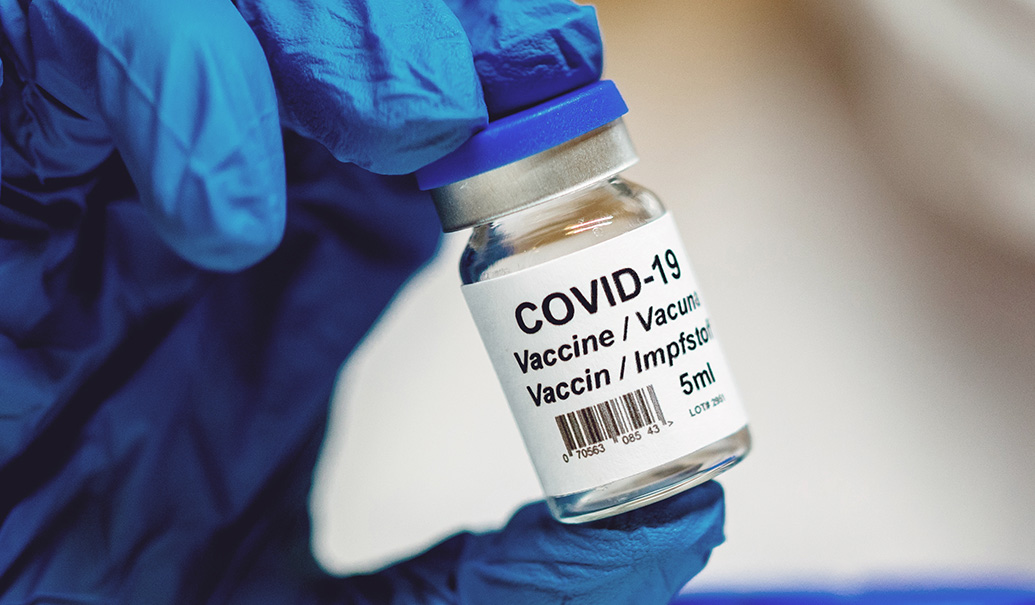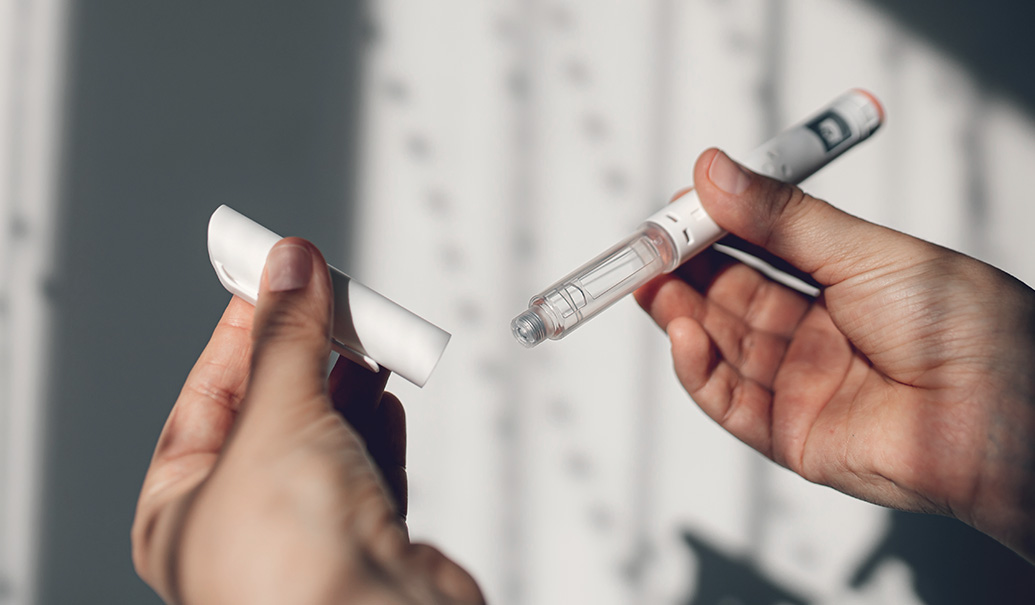As the COVID-19 pandemic spreads across the globe, scientists began the race to develop a potential vaccine to combat the virus. In the U.S., the federal government-initiated Operation Warp Speed (OWS) to facilitate the development, manufacturing and distribution of a safe and effective vaccine to the public. As OWS vaccine candidates prepare to hit the market, developing the infrastructure and processes for vaccine distribution remains a key consideration for large-scale vaccination efforts. We will explore the U.S. COVID-19 vaccine distribution process and highlight the key components to delivering doses to healthcare providers.
The centralized distribution network
The distribution of COVID-19 vaccines in the U.S. will rely on a network of vaccine manufacturers, federal and state agencies, and various distribution partners.
At the center of the centralized distribution process in the U.S. are government agencies, such as the CDC and McKesson, the largest pharmaceutical distribution company in the U.S.
The CDC is responsible for determining the number of doses allocated for each state or territory, based on critical populations recommended for vaccination by the Advisory Committee on Immunization Practices, vaccine availability and overall population. The allocation of vaccine doses may evolve over time as manufacturing scales up and case counts fluctuate across regions. Most jurisdictions will ask enrolled healthcare providers to place orders using systems routinely used for publicly funded vaccines, such as the CDC’s Vaccine Tracking System (VTrckS). Each jurisdiction’s immunization program is then responsible for managing and approving orders from vaccination providers in accordance with its given allocation. As an example, the New York Department of Health published details of its COVID-19 vaccination program in October, which outlines guiding principles for vaccine prioritization, distribution, delivery and administration.
All OWS vaccine candidates, with the exception of those with ultra-cold (i.e., -70°C and below) storage requirements, will be distributed through a centralized distribution network. At the core of the centralized distribution process is McKesson, with which the CDC has contracted as the centralized distributor to orchestrate the process. McKesson is partnering with pharmacies and grocery stores, such as Walmart, CVS and Walgreens, to enhance distribution—though it remains unclear how COVID-19 vaccination sites will be prioritized beyond ultra-cold storage availability once distribution begins. The CDC has also partnered with CVS and Walgreens for onsite COVID-19 vaccination for residents of assisted living facilities.
The DoD will monitor shipments from manufacturing facilities to vaccination sites to ensure that vaccines are stored in temperature-controlled environments and are not at risk of expiration. The DoD will manage the logistics of medical supplies, dry ice and trucks.
COVID-19 vaccines will be disseminated as follows:
- The CDC will determine the appropriate volume of doses allocated for each jurisdiction.
- Once vaccine doses have been manufactured, the CDC will direct manufacturers to send allotments of vaccines to McKesson’s distribution centers.
- Manufacturers will communicate with the CDC the anticipated volume at each McKesson distribution center and independently arrange shipping from their manufacturing sites or fill-finish facilities.
- When the doses arrive at the distribution centers, McKesson is tasked with delivering the appropriate volume of vaccines to their designated provider sites within 48 hours.
- McKesson will electronically provide information to DoD to monitor all logistical aspects of the distribution process.
- The DoD will follow each shipment from its manufacturing facility to the vaccination site to identify if potential breaches of protocol occur.
As COVID-19 vaccines are temperature-sensitive, they must be stored and handled correctly to ensure efficacy and shelf-life are preserved. Trained McKesson personnel will be responsible for packaging the vaccine shipments in the appropriate temperature-controlled conditions. From there, vaccine doses will be sent to administration sites through shipping partners like FedEx, DHL and UPS. These carriers will use service options that provide overnight, environmentally controlled and monitored transportation (commonly used for vaccines and medicines). If not immediately turned around for distribution, carriers may store vaccines intermittently in “freezer farm” facilities with dedicated temperature down to -80°C. In addition, distribution centers may have a DoD-provided security detail to safeguard the vaccines throughout the entirety of the distribution process. Once near the vaccination site, carriers will then truck the doses directly to the sites for administration.
Given the strict temperature requirements and high volume of doses packaged in each shipment, COVID-19 vaccines are expected to be administered in large-volume settings to ensure the vaccine is given within the right time and temperature specifications. This may limit the vaccination sites that are initially eligible to receive doses, but available sites could increase over time as more supply becomes available.
McKesson is also responsible for the distribution of ancillary supply kits, which include the supplies necessary to administer COVID-19 vaccines—such as needles, syringes, swabs and adhesive bandages. OWS aims to procure and assemble 6.6 million ancillary supply kits, which would support the vaccination of up to 660 million doses of vaccine, therefore covering the U.S. population. BARDA has already awarded four large orders for ancillary supplies, with the goal to maximize the availability of needles and syringes at the end of 2020. McKesson will package ancillary supplies into kits, which will be automatically ordered to match vaccine volume in VTrckS. Each kit will contain enough supplies to administer 100 doses—which includes 105 needles, 105 syringes, and 210 alcohol prep pads. As of November 8, McKesson has received the medical supplies necessary to produce enough kits for 88 million shots.
While the majority of vaccine candidates will follow this process in the U.S., there are exceptions. For Pfizer/BioNTech’s vaccine, which requires ultra-cold storage, cold-chain logistics will need to be managed independently by the manufacturer outside of the centralized distribution network.
Vaccine candidates with ultra-cold storage requirements
Pharmaceutical companies that distribute outside of the U.S. government’s distribution partner, McKesson, will have to create their own logistics and distribution chain. Although the federal government has purchased up to 600 million doses of the Pfizer/BioNTech vaccine, Pfizer has not accepted federal funding for its vaccine research and development, and thus far is the only company that has committed to distributing outside of the government’s centralized distribution path. Having recently demonstrated 95% effectiveness and submitted an emergency use authorization request to the FDA, Pfizer/BioNTech’s vaccine candidate is a strong contender to become the first vaccine to be distributed in the U.S. As of November 16, Pfizer/BioNTech have launched a pilot program to test distribution of their vaccines to four states (Rhode Island, Texas, New Mexico and Tennessee).
One of the major challenges that scientists have faced developing mRNA vaccines is the susceptibility of RNA to chemical and enzymatic degradation. Compared to vaccines available today, mRNA vaccines require significantly colder temperatures for storage and shipment.
Pfizer/BioNTech’s mRNA candidate has the coldest storage requirements (-60°C to -80°C), creating significant distribution challenges. To ensure that the destination sites are equipped to store their vaccines before usage, the companies have designed reusable Dry Ice Thermal Shippers (DITS), which can hold anywhere from 1,000 to 5,000 doses and include GPS-enabled thermal sensors. The suitcase-size containers can maintain the recommended storage conditions (-70°C ± 10°C) for up to 15 days. Once the vaccines are transferred to a standard refrigerator, they must be administered within five days. Longer storage will only be feasible in facilities with ultra-cold freezers, potentially limiting the vaccination sites eligible to receive Pfizer/BioNTech’s vaccine.
In contrast, Moderna’s mRNA candidate has warmer storage requirements (-20°C) and is expected to remain stable at standard refrigerator temperatures for 30 days.
A control center will track the temperature and location of each vaccine shipment and provide real-time alerts if any DITS warm above the baseline temperature requirements or if the shipments do not reach their destination within the prescribed time frame. To increase the number of DITS that can be transported, the FAA has increased the amount of dry ice allowed on select United Airlines flights from 3,000 to 15,000 pounds.
Unlike manufacturers who will route through McKesson, Pfizer/BioNTech will direct all shipments. Most of Pfizer/BioNTech’s shipments will be sourced from a manufacturing facility in Kalamazoo, Michigan, and a storage center in Pleasant Prairie, Wisconsin. The average expected distribution time from distribution center to administration is three days.
As several candidates will soon await emergency authorization after having far surpassed the FDA’s 50% efficacy threshold, the U.S. government is preparing to ramp up distribution efforts to effectively disseminate COVID-19 vaccines to the general public. While the unique storage requirements of each vaccine and the complex distribution network may pose significant challenges, we may soon be one step closer to distributing vaccines across the U.S. and slowing the spread of COVID-19.

















